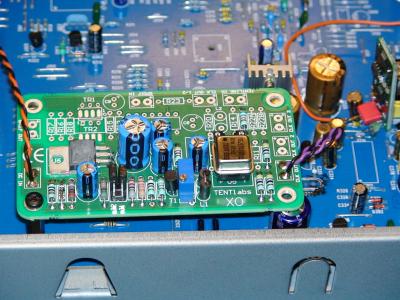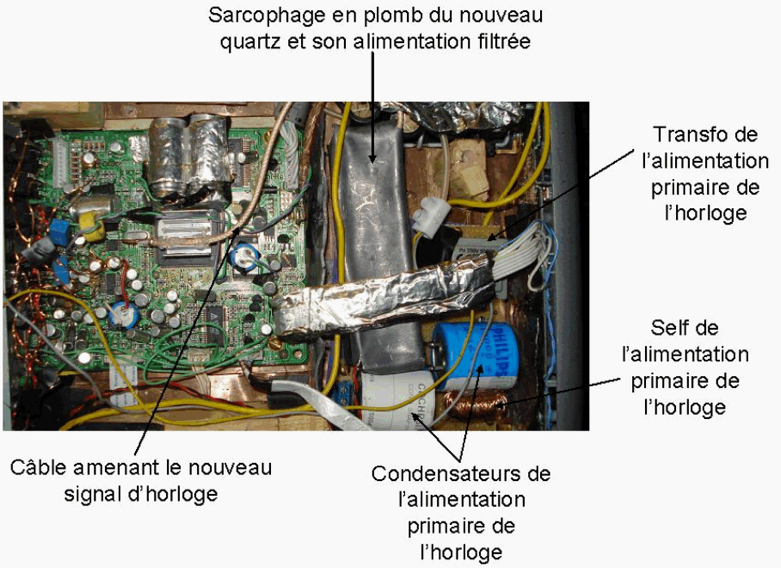About upgrading

Source
In a typical digital playback chain, one should start with upgrading the audio clock in the source. Usually this a CD player, but nowadays hard disk based systems are getting more common. Typically, an XO2.2 or module does the job here, eventually an XO supply can be added.If the digital source consists of a drive / DAC combination, one should first upgrade the drive with an XO3.2 module. This lowers the jitter in general, but also improves the quality of the digital output that feeds the DAC. Measurements show that DACs benefit form lower input jitter, regardless of the DAC quality, architecture or price.
DAC
External DACs can be improved in the area of jitter as well. Traditional DACs using input receivers like CS8412/14 or YM3623 are upgraded with the XO DAC module (either 2.8224, 11.2896 or 16.9344 MHz). DACs with sample rate converters are generally upgraded using XO2.2 (mostly 24.576 MHz). Both modules can be fed with XO supply for ultimate performance.Interface
By the redbook standard, RCA connectors are prescribed for the SPDIF digital interface. RCA connectors are far from optimal for transmission of RF signals. Therefor we advise to change all connectors and cabling to true 75 ohm BNC. The connectors should be directly mounted to the cabinet (hence no isolation). While there are many digital cables on the market, I can't avoid promoting the AudioMagic cable that we use for Tentlabs demo's (both digital & analog).Power supplies
In most if not all of the upgrades we perform for customers, we replace all rectifier diodes for Schottky Barier types. These do not generate RF when switching, something that regular (cheap) diodes do. Suitable types are 1N5819 or SB160. Always make sure the specifications meet the requirements. For high voltages, we prefer the use of BYV96E.In addition, the decoupling capacitors are either old or cheap, and the most critical ones should be replaced. We have good experience with Black Gate and Panasonic FC types. Always replace the caps right after the rectifiers and the ones placed directly at the various chips (DACs, output opamps). Here's some advise on optimizing the supply decoupling.
Better than good capacitors are our shunt regulators. These can be placed close to the chips, and no capacitor is needed anymore !
Analog output stages
In many CD players and DACs, cheap opamps are used. Types that we often see are NE5532, NRJ2144 and alike. Most of them can be directly substituted by OPA134 (single) or OPA2134 (dual), a few euro each and unbeatable in terms of price versus performance.One of the most evil things found in CD players and DACs are muting transistors. These short the output when switching on / off the equipment, to avoid clicks in the speakers. This works fine, but the parasitic effect of these transistors is phase modulation, which muffles the sound and decreases focus and 3D imaging. More expensive machines have a relay, which works perfect, otherwise cut these transistors out ! Yes, take a small cutter !
The proof is in the eating of.....
A nice overview (in Dutch, sorry) of a full CD player modification can be found hereNot like this please ........... Scared to modify your own equipment ? Consult us !
